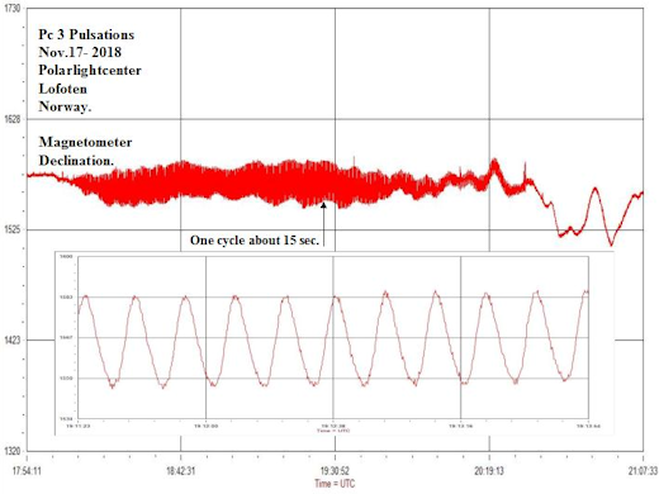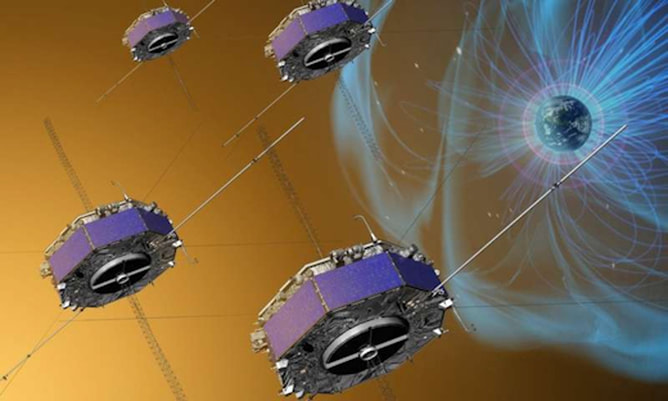Imagine blowing across a piece of paper, making it flutter with your breath. The solar wind can have a similar effect Earth's magnetic field. The waves Stammes recorded are essentially flutters propagating down the flanks of our planet's magnetosphere excited by the breath of the sun. Researchers call them "pulsations continuous" -- or "Pc" for short..
"A sensitive magnetometer is required to record these waves," says Stammes. "I use a mechanical magnetometer with bar magnets suspended from a special wire. LEDs and light detectors in an isolated dark box record the motion of the magnets, while vanes in oil damp out non-magnetic interference."
Pc waves are classified into 5 types depending on their period. The Nov. 18th waves fall into category Pc3. Researchers have found that Pc3 waves sometimes flow around Earth's magnetic field and cause a "tearing instability" in our planet's magnetic tail. This, in turn, sets the stage for an explosion as magnetic fields in the tail reconnect.
Stammes has recorded many Pc waves in the past, "but this is the first time I have detected category Pc3," he says. "This was a very rare episode indeed."
www.spaceweather.com


 RSS Feed
RSS Feed